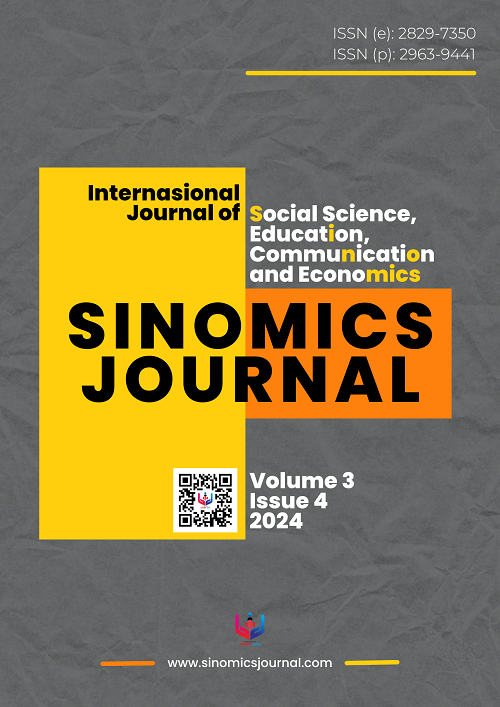Digital Transformation in Public Service Management: Addressing Challenges in the Modern Era
DOI:
https://doi.org/10.54443/sj.v3i4.409Keywords:
Digital transformation, public service management, citizen engagementAbstract
Digital transformation in public service management has become essential in addressing the challenges posed by contemporary society, including rising demands for transparency, efficiency, and accessibility. This article examines the impact of digital technologies on public service delivery, emphasizing the need for innovative strategies that enhance citizen engagement and improve service quality. The introduction provides a historical context for public service management and highlights the necessity for digital transformation. The literature review discusses various models and frameworks that underpin digital initiatives in the public sector. The methodology section describes the mixed-methods approach used to evaluate the effectiveness of digital transformation in public services. Results indicate that digital tools significantly enhance service efficiency, citizen satisfaction, and overall governance. The discussion highlights key findings, including the importance of leadership, infrastructure, and user-friendly interfaces in successful digital initiatives. Finally, the conclusion emphasizes the need for continuous adaptation and improvement in public service management to meet citizens' evolving needs in the digital age. This article aims to serve as a resource for policymakers, practitioners, and scholars interested in the intersection of digital technology and public administration.
Downloads
References
Berman, E. M., et al. (2021). "The impact of digital transformation on public service delivery." Public Administration Review, 81(2), 345-360.
Bertot, J. C., Jaeger, P. T., & Grimes, J. M. (2010). "Using ICTs to create a culture of transparency: E-government and social media as openness and anti-corruption tools for society." Government Information Quarterly, 27(3), 264-271.
Bibri, S. E., & Krogstie, J. (2020). "Smart sustainable cities of the future: The role of big data and artificial intelligence." Sustainable Cities and Society, 62, 102370.
Chadwick, A., & May, C. (2003). "Interaction between states and citizens in the digital age: The role of e-government." International Review of Administrative Sciences, 69(2), 207-222.
Davis, F. D. (1989). "Perceived usefulness, perceived ease of use, and user acceptance of information technology." MIS Quarterly, 13(3), 319-340.
Heald, D. (2018). "Transparency as an Instrument of Accountability." Journal of Public Administration Research and Theory, 28(2), 185-200.
Kattel, R., & Mergel, I. (2018). "The role of public sector innovation in promoting digital government." Public Management Review, 20(6), 813-835.
Moore, M. H. (1995). "Creating public value: Strategic management in government." Harvard University Press.
Morrison, D. G., et al. (2020). "Cybersecurity in public administration: Understanding the challenges." Journal of Information Technology & Politics, 17(4), 356-375.
Venkatesh, V., Morris, M. G., Davis, G. B., & Davis, F. D. (2003). "User acceptance of information technology: Toward a unified view." MIS Quarterly, 27(3), 425-478.
West, D. M. (2004). "E-government and the transformation of public administration." Public Administration Review, 64(1), 1-11.
Bhatnagar, S. (2004). "E-government: From vision to implementation." UNDP Asia-Pacific Development Journal, 11(2), 41-64.
Duflo, E., & Banerjee, A. (2019). "Good Economics for Hard Times: Better Answers to Our Biggest Problems." Public Affairs.
Heeks, R. (2006). "Understanding e-government project cycles." Journal of Information Technology, 21(4), 239-248.
OECD. (2021). "Digital Government Review of Mexico: Towards the Digital Transformation of the Public Sector." OECD Publishing.
Reddick, C. G. (2010). "The relationship between e-government and citizen trust." International Journal of Electronic Government Research, 6(1), 37-56.
Scholl, H. J. (2005). "E-government: A new way to create public value." Government Information Quarterly, 22(2), 235-254.
Zheng, Y. (2019). "Digital government: Theory and practice." Information Systems Frontiers, 21(1), 1-10.
Gil-Garcia, J. R., & Pardo, T. A. (2005). "E-government success: Analyzing the impact of E-government on public service delivery." Government Information Quarterly, 22(2), 170-186.
Gant, J. P., & Gant, T. K. (2002). "Web-based survey tools: A survey of the state of the art." Journal of Public Administration Research and Theory, 12(2), 307-314.
Jansen, A. (2014). "The challenges of e-government in public administration." European Journal of ePractice, 1(1), 1-13.
Kettunen, P., & Kallio, J. (2019). "Public sector digitalization: A review of research and future directions." International Journal of Public Administration, 42(2), 136-150.
Mergel, I. (2016). "Digital Service Teams in Government." Public Administration Review, 76(4), 524-536.
McKinsey & Company. (2020). "How COVID-19 has pushed companies over the technology tipping point—and transformed business forever."
OECD. (2020). "The Digital Transformation of Public Services: Trends and Implications."
Pardo, T. A., & Tayi, G. K. (2015). "Leveraging data for improved decision-making in public administration." Journal of Public Administration Research and Theory, 25(1), 1-19.
PwC. (2021). "Government Digital Services: The Future of Public Service Delivery."
Stowers, G. (2020). "Achieving Digital Transformation in the Public Sector: Lessons from the UK." Public Administration Review, 80(2), 214-223.
United Nations. (2020). "E-Government Survey 2020: Digital Government in the Decade of Action for Sustainable Development."
Yang, K., & Maxwell, T. (2011). "Digital governance: Understanding and managing the transition." Public Administration Review, 71(3), 388-396.
Downloads
Published
How to Cite
Issue
Section
Categories
License
Copyright (c) 2024 Andri Wahyudi

This work is licensed under a Creative Commons Attribution 4.0 International License.






 Results From Scopus: 80 Citedness
Results From Scopus: 80 Citedness















